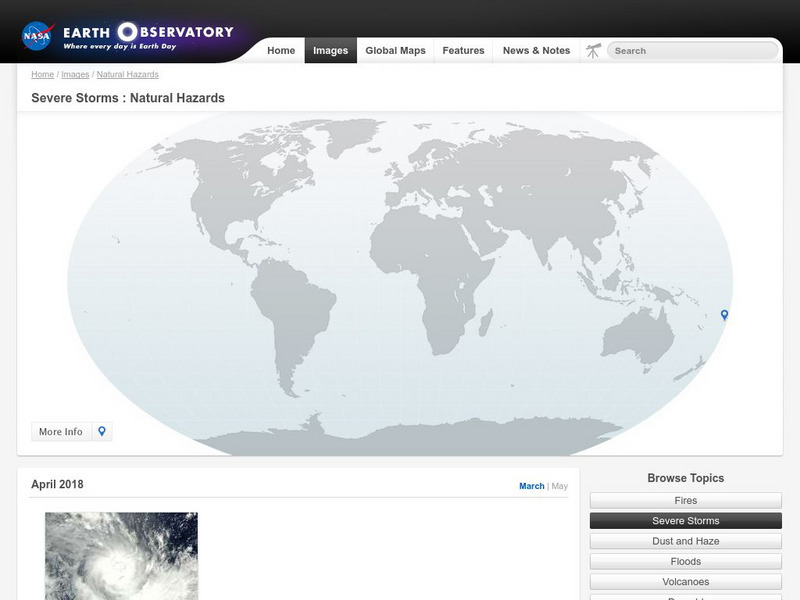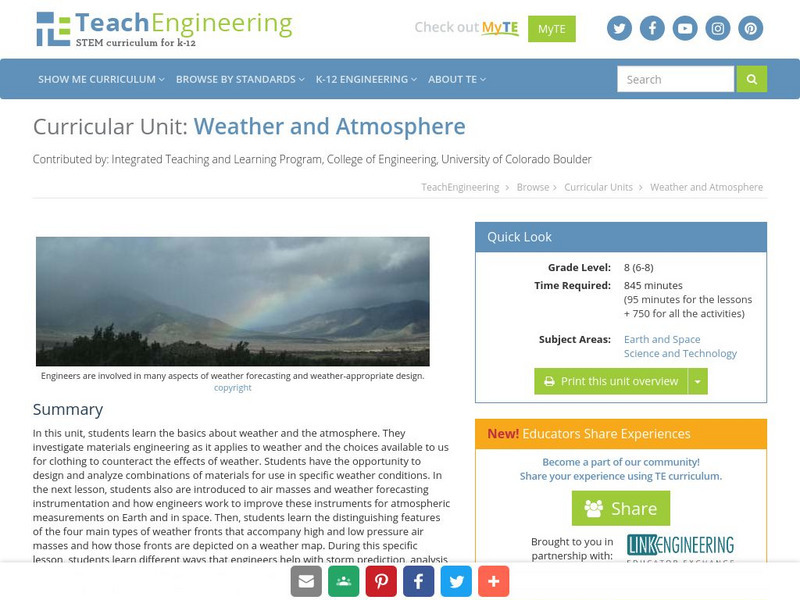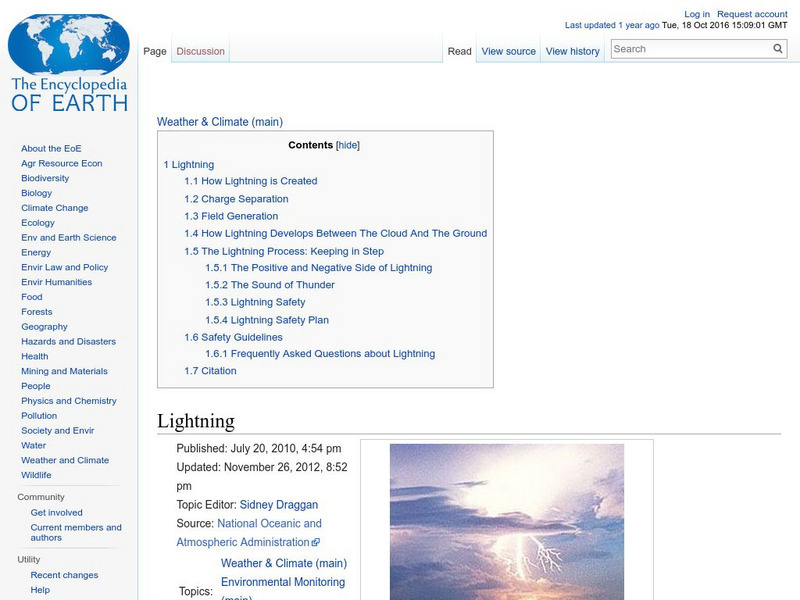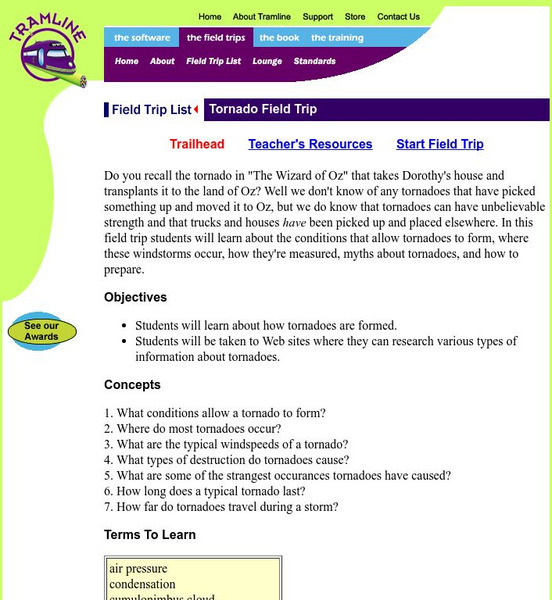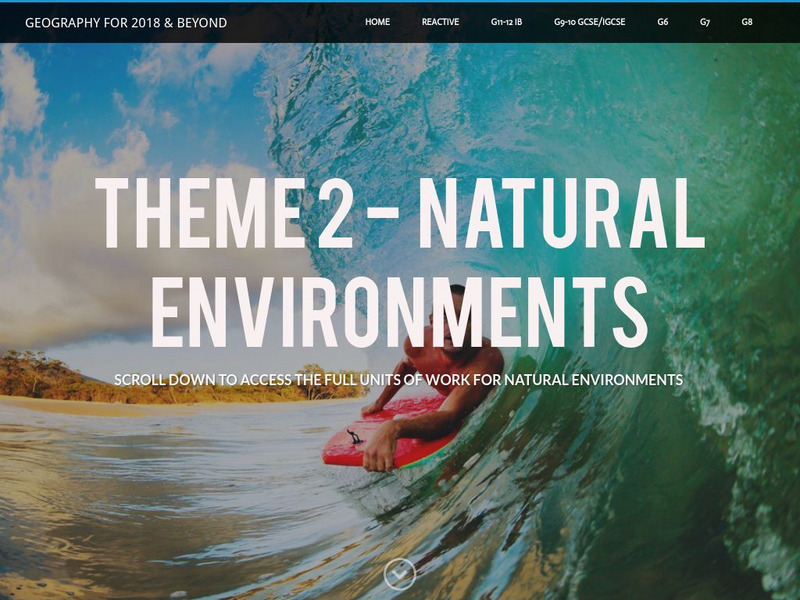Curated OER
Understanding Cloud Formation
Students explore air and clouds by watching demonstration. They perform an experiment to measure air pressure changes.
Curated OER
ESOL Safety and Security
Students discuss preparation and procedures for natural disasters. They discuss safety procedures for each natural disaster and then share their own personal experiences with natural disasters.
Science Struck
Science Struck: Different Types of Storms
Provides descriptions of a variety of storm types including wintry ones, ones with no precipitation, and very destructive ones. Discusses weather conditions that lead to these storms, precautions one can take, public alerts, etc.
Scholastic
Scholastic: Study Jams! Science: Weather & Climate: Severe Storms
A slideshow and a short multiple-choice quiz on the topic of severe storms, some types, and the damage that they cause.
NASA
Nasa Earth Observatory: Natural Hazards: Severe Storms
Browse pictures of severe storms, such as blizzards, cyclones, ice storms, and typhoons, while exploring the causes and often dangerous effects of these natural weather phenomena.
Other
Science4 Us: Weather
The Weather module allows students to explore Earth's ordinary and extreme weather in safety. Activities include using the weather information to decide what an online character should wear and learning about how to stay safe during...
University Corporation for Atmospheric Research
Ucar: Clouds, Weather, and Climate Teaching Box
This Teaching Box combines hands-on activities, data analysis, and discussion that help high school students consider how weather can affect cloud types and how cloud types can affect climate.
National Weather Service
National Weather Service: Weather Fatality, Injury and Damage Statistics
Web site that contains detailed statistics involving natural disasters by year and type of disaster. Statistics are available in .pdf format.
E-learning for Kids
E Learning for Kids: Science: Antarctica Research Center: Describe Different Weather Patterns
This module provides informational text about weather. Students will learn about precipitation and storm fronts. Students will also learn about different types of storms, including the following: hurricanes, cyclones, and typhoons.
University of Illinois
University of Illinois Urbana Champaign: Severe Storms Modeling
This site features information on the severe storm computer modeling that meteorologists use to help them study severe storms.
University of Illinois
University of Illinois Urbana Champaign: Severe Storms
This site talks about severe storms. Topics include the dangers of thunderstorms, types of thunderstorms, components of thunderstorms, tornadoes, and modeling.
TeachEngineering
Teach Engineering: Weather and Atmosphere
In this unit, students learn the basics about weather and the atmosphere. They investigate materials engineering as it applies to weather and the choices available to us for clothing to counteract the effects of weather. Students have...
SMART Technologies
Smart: Weather Patterns
In this lesson students will be able to identify and describe how different types of storms form (hurricanes, tornadoes, winter storms and thunder storms). The activity can be used on the SMART board or in SLS Online. Covert slides 6, 8,...
Other
Boatsafe.com: How to Be a Storm Spotter
How can you learn to be a storm spotter? This site highlights information on the different types of clouds found in the different types of weather. View the photos of the various clouds. Scroll down to a summary of the information you...
University Corporation for Atmospheric Research
Ucar: Anatomy of a Storm's Clouds
Learners analyze cloud data from a storm that crossed the United States in late November 2019. They identify cloud types from photos of the sky in various locations to identify the zonation of clouds across a cold and warm front.
NASA
Nasa: Mission Science: Space Weather 101
Find out about space weather, including coronal mass ejections and solar flares, which are caused by all kinds of different types of solar activity.
ClassFlow
Class Flow: Weather
[Free Registration/Login Required] This flipchart was created to go along with Harcourt 2nd grade science textbook. It discusses the weather, the water cycle, seasons, and different types of storms and what to do based on the type. It...
NOAA
Noaa: Tornadoes, Nature's Most Violent Storms
This page, put out by the National Weather Service, thoroughly explains the causes and types of tornadoes. Tornado safety is covered in the form of warning signs and what you can do to stay safe both in school and at home. The full...
ClassFlow
Class Flow: Weather
[Free Registration/Login Required] This flipchart explores weather related vocabulary, including the water cycle, precipitation, condensation, evaporation, storms, and weather instruments.
University Corporation for Atmospheric Research
Ucar: Icy Winter Weather
When meteorologists forecast a winter storm one of the important predictions they make is the type, or types, of precipitation that are likely to fall. Will freezing rain cause an ice storm? Will ice pellets called sleet leave the ground...
Encyclopedia of Earth
Encyclopedia of Earth: Weather & Climate: Lightning
Explains what lightning is, how it is created, what happens inside thunderstorms, how lightning develops during a storm, types of lightning, how individuals and groups can stay safe, chances of being struck by lightning, and answers to...
Tramline
Tramline: Tornado Field Trip
In this virtual field trip students learn about the formation of tornadoes. Students also visit websites where they can research various types of information about tornadoes.
Geographypods
Geographypods: Theme 2: Natural Environments
A rich collection of highly engaging learning modules on topics related to the natural environment. Covers four main areas - plate tectonics, forms and processes, weather and climate, and rainforest and desert. Within each of these,...
TeachEngineering
Teach Engineering: Engineering for the Earth
Young students are introduced to the complex systems of the Earth through numerous lessons on its natural resources, processes, weather, climate and landforms. Key earth science topics include rocks, soils and minerals, water and natural...




